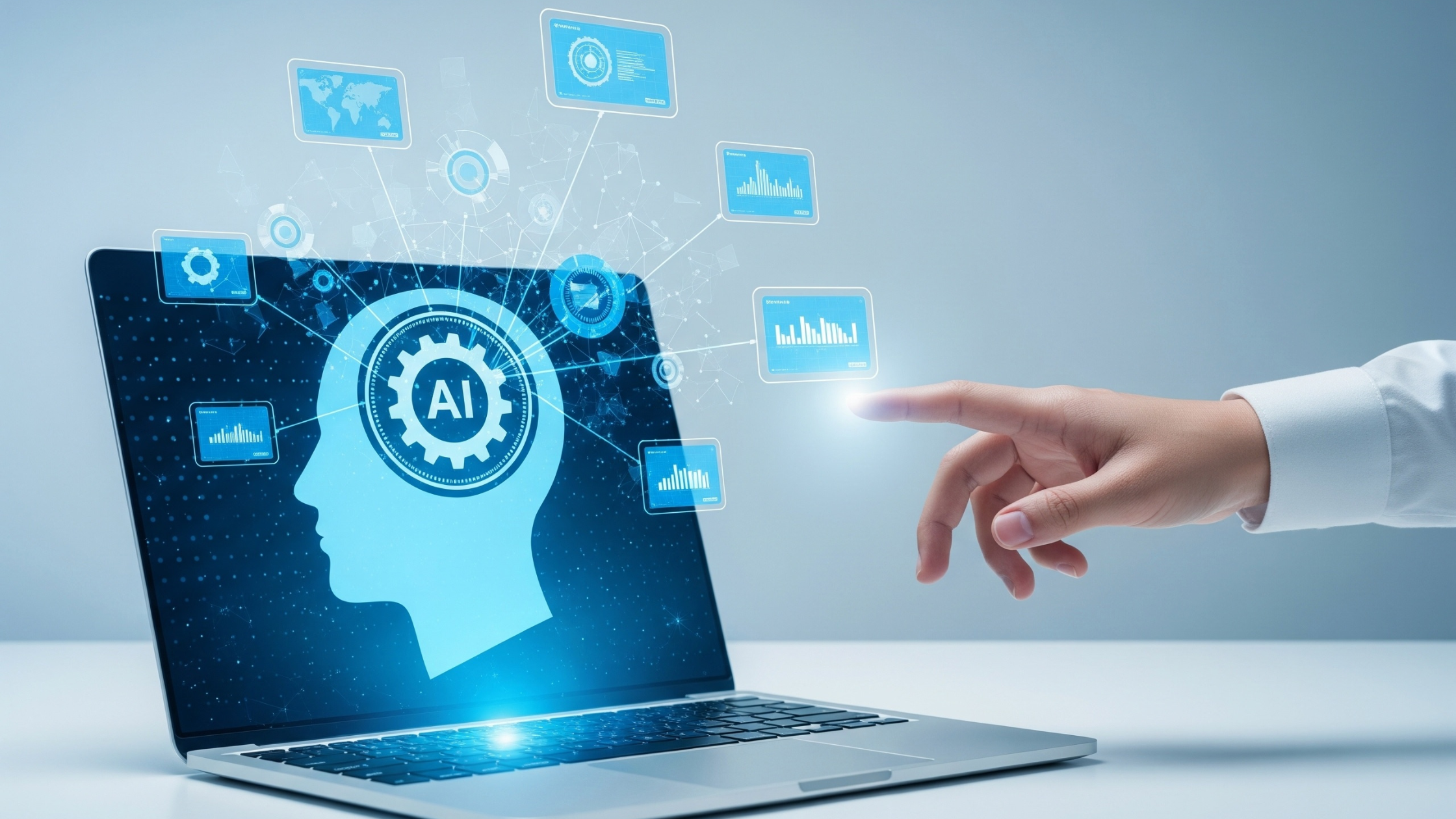In an era where cyber threats are becoming increasingly sophisticated and pervasive, the integration of Artificial Intelligence (AI) into cybersecurity has emerged as a game-changing strategy. AI’s ability to process vast amounts of data, identify patterns, and adapt to new threats in real-time makes it an invaluable asset in the ongoing battle against cybercrime. This blog explores the various applications of AI in cybersecurity, its benefits, challenges, and the future landscape of AI-driven digital defense.
1. Threat Detection and Prevention
One of the primary applications of AI in cybersecurity is in enhancing threat detection and prevention capabilities:
a) Anomaly Detection: AI algorithms can analyze network traffic patterns to identify unusual activities that may indicate a security breach. By establishing a baseline of normal behavior, AI systems can flag deviations that human analysts might miss.
b) Malware Identification: Machine learning models can be trained on vast datasets of known malware, enabling them to recognize new, previously unseen malicious software based on similarities to known threats.
c) Zero-Day Exploit Detection: AI systems can potentially identify zero-day vulnerabilities by analyzing code and system behaviors, providing a crucial line of defense against emerging threats.
d) Phishing Detection: AI-powered email filters can identify sophisticated phishing attempts by analyzing email content, sender information, and URL structures.
2. Automated Incident Response
AI is revolutionizing incident response by enabling faster and more efficient reactions to security breaches:
a) Automated Triage: AI systems can prioritize security alerts based on their potential impact and urgency, allowing security teams to focus on the most critical threats.
b) Adaptive Security Measures: AI can automatically adjust security protocols in response to detected threats, such as isolating affected systems or blocking suspicious IP addresses.
c) Predictive Analysis: By analyzing historical data and current trends, AI can predict potential future attack vectors, allowing organizations to proactively strengthen their defenses.
3. User and Entity Behavior Analytics (UEBA)
AI-driven UEBA systems provide a more nuanced approach to security:
a) Behavioral Baselines: AI algorithms can establish normal behavior patterns for users and entities within a network, making it easier to detect insider threats or compromised accounts.
b) Continuous Authentication: AI can enable continuous authentication by analyzing user behavior patterns, adding an extra layer of security beyond traditional password-based systems.
c) Privilege Abuse Detection: AI systems can identify instances of users accessing resources beyond their typical needs or permissions, potentially indicating a security breach.
4. Network Security and Traffic Analysis
AI is enhancing network security through advanced traffic analysis:
a) DDoS Mitigation: AI algorithms can quickly identify and mitigate Distributed Denial of Service (DDoS) attacks by analyzing traffic patterns and distinguishing between legitimate and malicious requests.
b) Network Segmentation: AI can assist in optimizing network segmentation by analyzing traffic flows and recommending optimal security policies.
c) Encrypted Traffic Analysis: Advanced AI techniques can detect malicious activities even in encrypted traffic without decrypting the content, preserving privacy while enhancing security.
5. Vulnerability Management
AI is streamlining vulnerability management processes:
a) Automated Vulnerability Scanning: AI-powered tools can continuously scan systems for vulnerabilities, prioritizing them based on their potential impact and exploitability.
b) Patch Management: AI systems can assist in automating the patch management process, ensuring critical vulnerabilities are addressed promptly.
c) Risk Assessment: By analyzing various factors, AI can provide more accurate and dynamic risk assessments, helping organizations allocate their security resources more effectively.
6. Fraud Detection
In the financial sector, AI is playing a crucial role in detecting and preventing fraud:
a) Transaction Monitoring: AI algorithms can analyze transaction patterns in real-time to identify potentially fraudulent activities.
b) Identity Verification: AI-powered biometric systems, including facial recognition and voice analysis, are enhancing identity verification processes.
c) Insurance Claim Analysis: AI can detect patterns indicative of insurance fraud by analyzing claim data and identifying anomalies.
7. Challenges and Considerations
While AI offers significant benefits in cybersecurity, it also presents challenges:
a) Data Privacy Concerns: The use of AI in security often requires processing large amounts of potentially sensitive data, raising privacy concerns.
b) False Positives: AI systems may generate false positives, potentially overwhelming security teams if not properly tuned.
c) AI-Powered Attacks: As AI enhances defensive capabilities, cybercriminals are also leveraging AI to create more sophisticated attacks, leading to an AI arms race.
d) Skill Gap: There’s a growing need for professionals who understand both cybersecurity and AI, creating a skill gap in the industry.
e) Explainability: Some AI models, particularly deep learning systems, can be “black boxes,” making it difficult to explain their decision-making processes.
8. The Future of AI in Cybersecurity
Looking ahead, several trends are likely to shape the future of AI in cybersecurity:
a) Quantum Computing and AI: As quantum computing advances, it will both pose new security challenges and enhance AI’s capabilities in cryptography and threat detection.
b) AI-Driven Secure Software Development: AI will play an increasing role in identifying and mitigating security vulnerabilities during the software development process.
c) Advanced Threat Intelligence: AI will enable more sophisticated threat intelligence platforms, providing actionable insights by correlating data from diverse sources.
d) Autonomous Security Systems: We may see the emergence of fully autonomous security systems capable of detecting, analyzing, and responding to threats with minimal human intervention.
e) AI in IoT Security: As the Internet of Things (IoT) expands, AI will be crucial in securing the vast networks of connected devices.
9. Ethical Considerations
The use of AI in cybersecurity raises important ethical questions:
a) Bias in AI Systems: Ensuring AI systems are free from biases that could lead to unfair or discriminatory security practices.
b) Transparency and Accountability: Establishing frameworks for transparency and accountability in AI-driven security decisions.
c) Human Oversight: Determining the appropriate balance between AI automation and human oversight in critical security operations.
Conclusion
The integration of AI into cybersecurity applications represents a significant leap forward in our ability to defend against digital threats. From enhancing threat detection and automating incident response to enabling more sophisticated user behavior analytics and fraud detection, AI is revolutionizing every aspect of cybersecurity.
However, the adoption of AI in this critical field also brings challenges and ethical considerations that must be carefully addressed. As we move forward, it will be crucial to develop AI systems that are not only powerful and effective but also transparent, fair, and aligned with ethical principles.
The future of cybersecurity will likely be characterized by an ongoing race between AI-powered defenses and AI-enhanced attacks. Organizations that successfully leverage AI while addressing its challenges will be best positioned to protect themselves in this evolving threat landscape.
As AI continues to evolve, its role in cybersecurity will only grow more significant. By embracing these technologies responsibly and proactively, we can work towards a more secure digital future for all.







